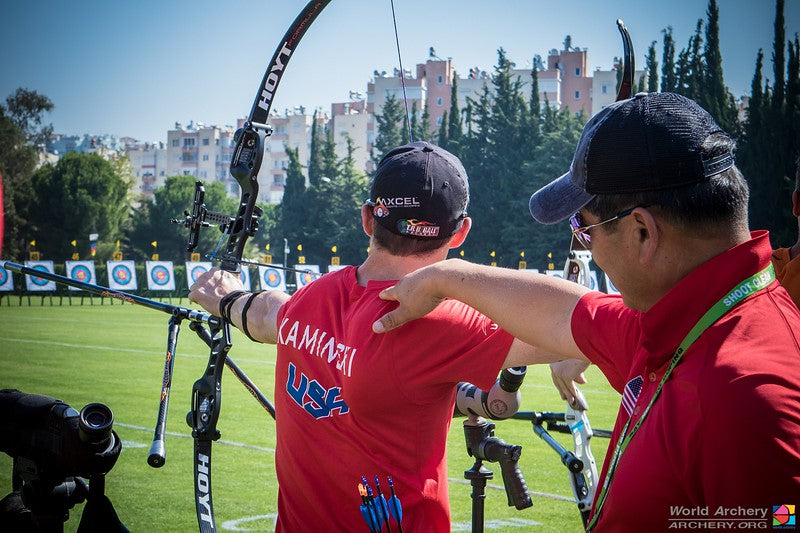
Mastering the NTS System: A Beginner’s Guide to the KSL Shot Cycle in Archery
Share
Welcome to our archery insights blog! We are thrilled to bring Jake's innovative archery techniques to you in a new format. While Jake's videos have helped countless archers hone their skills, I know that some of you prefer to learn through reading. That's why we've decided to translate his video content into comprehensive blog posts, ensuring that every essential detail is easily accessible in writing.
In today's post, we'll explore the fundamentals of the NTS system, also known as the KSL shot cycle—a method designed to help archers develop a consistent and repeatable shot process. Whether you're just starting out or you're a seasoned shooter looking to fine-tune your technique, you'll find practical tips and insights that can elevate your archery game.
Enjoy the read, and happy shooting!
The Fundamentals of the NTS System
At its core, the NTS system is about creating a repeatable and consistent shot cycle. By following the same process every time you shoot, you build muscle memory and improve accuracy. Jake emphasizes that the secret to consistently hitting tight groups and even winning tournaments lies in doing the same thing over and over again with purpose—not simply hoping for a lucky shot.
Jake Kaminski's NTS Shot cycle video can be found Here
1. Focus on Yourself, Not the Target
One of the most important takeaways from Jake is the need to focus on your form and internal process rather than obsessing over where the arrow lands.
-
Why it matters:
When you’re new to archery, it’s easy to get distracted by the target. Instead, pay close attention to your own actions: your stance, your grip, your draw, and even your mental state. By concentrating on executing the same movements consistently, you give your body the best chance to deliver accurate shots. -
The mindset:
Think of it like training for any other sport—whether you're throwing a ball or doing a Pirouette, consistency in your movement is what leads to success. In archery, that means trusting the process and letting the bow do its job once your form is correct.
2. Establish a Consistent Stance with a Shooting Line
A critical component of the NTS system is having a consistent shooting stance. Start by creating a physical reference point—a shooting line:
-
Create your shooting line:
If you’re practicing in your backyard or an area without a designated shooting line, simply scratch a line in the ground. This line should be perpendicular to the target direction. -
How to position yourself:
Always approach the shooting line the same way:- One foot on each side of the line: This helps ensure your stance is balanced.
- Feet shoulder-width apart: A wider stance offers better stability than having your feet closer together.
-
Stance style:
Depending on your comfort and experience, you can start with either a closed stance (feet parallel to the target line) or a slightly open stance (about 10–15 degrees open). The key is to pick one and stick with it until it becomes second nature.
3. Stand Upright – The “Letter T” Position
Proper body alignment is vital for consistency. Stand upright like the capital letter “T”:
-
Alignment matters:
Your head, spine, pelvis, and feet should form a straight vertical line. This alignment ensures that you’re not leaning back or hunching over, which can throw off your shot. -
Common mistakes:
Beginners often lean back or let their hips jut out when picking up the bow. Correcting this early on is essential for developing a strong and stable shooting form. -
Tip:
Practice standing in front of a mirror or ask a friend to check your form until you can consistently reproduce the “T” shape every time you shoot.
4. Consistent Anchor – Your Personal Aiming Reference
The anchor point is where you consistently place your hand or finger on your face every time you draw the bow. This point acts as your personal aiming reference and is critical for repeatability:
-
How to set your anchor:
Whether you use your jaw, fingertip, or another reference point, the key is to do it the same way each time. -
Why it works:
By anchoring your shot, you eliminate variations in your drawing motion. Even a slight change in where your hand meets your face can result in a different arrow trajectory. -
Practice makes perfect:
Experiment with different anchor points to see what feels most natural, but once you’ve found your spot, commit to it for consistent results.
5. Follow-Through: The Final Key to Consistency
Proper follow-through. In archery, your work doesn’t stop the moment you release the string.
-
What is follow-through?
It’s the natural continuation of your shooting motion after releasing the arrow. Your hand should not abruptly stop; instead, it should continue to move in the direction of the shot, almost as if you’re “elbowing” someone behind you. -
Why follow-through matters:
A strong, consistent follow-through helps maintain the tension and trajectory of your shot. When you stop your motion too soon, you risk disturbing the arrow’s path and reducing accuracy. -
Visualize it:
Think of follow-through as the final act of a well-rehearsed performance. The smoother your follow-through, the more reliable your shot becomes.
Wrapping Up: The Path to Consistency
Embrace consistency through disciplined practice. Here are the five key elements to remember:
-
Focus on Yourself:
Prioritize your form and internal process over the immediate outcome. -
Consistent Stance:
Use a shooting line and maintain the same foot positioning every time. -
Stand Upright:
Align your body like a “T” at full draw for maximum stability. -
Establish an Anchor:
Choose a consistent reference point on your face to guide your shot. -
Maintain Follow-Through:
Let your motion continue after releasing the string to ensure a smooth, controlled shot.
By following these steps, even complete beginners can start their journey toward improved accuracy and a deeper understanding of archery fundamentals. Remember, mastering archery isn’t about making dramatic changes overnight—it’s about honing the same basic actions repeatedly until they become second nature.
Embrace the process, trust in your practice, and watch your archery skills grow!
Join the Conversation
Please leave a comment or thumbs up if you like this kind of content.
Happy shooting!
Kaminski Archery Team

